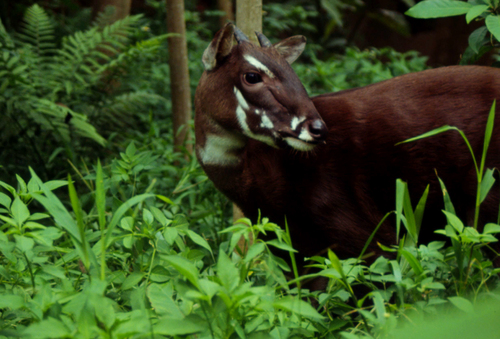
Saola
The elusive Saola, or 'Asian unicorn,' roams Vietnam's dense forests. With striking facial markings and long horns, this critically endangered species remains a mysterious symbol of biodiversity, facing threats from habitat loss and hunting. Its elusive nature and rarity make sightings exceptionally rare and treasured.
8-12 years
Lifespan
80.0 - 100.0 kg
Weight
Length: 1.5 - 2.0 m
Size
Brown, Red, Black
Color
2-3 years
Age of Sexual Maturity
6-8 months
Age of Weaning
23 mph
Top Speed
Critically Endangered
Conservation Status
Decreasing
Population Trend
Characteristics
Pseudoryx nghetinhensis, commonly known as the Saola, inhabits the dense forests of the Annamite Range in Vietnam and Laos. This elusive mammal, often called the 'Asian unicorn,' is distinguished by its long horns and striking facial markings. It is critically endangered, with threats from habitat loss and hunting.
Distribution Range of the Saola
Pseudoryx nghetinhensis, commonly known as the Saola, is native to the Annamite Range of Vietnam and Laos. This mountainous region is located in Southeast Asia and spans the border between the two countries.
Saola's Habitat
Environmental Conditions
The Saola inhabits dense evergreen forests in the Annamite Range. These forests are typically characterized by high humidity and are situated at elevations ranging from 200 to 1,800 meters. The climate is generally tropical, with distinct wet and dry seasons.
Ecological Niche
The Saola is adapted to a highly specific ecological niche within these dense forests. It relies on the lush, green understory for feeding on foliage, stems, and other vegetation. Its elusive nature and preference for remote, undisturbed areas suggest an adaptation to avoid predators and human disturbance. The Saola's habitat is under significant threat due to deforestation and habitat fragmentation.
Copyright @ Nature Style Limited. All Rights Reserved.
 English
English